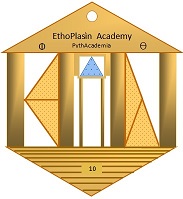

Kallos Beauty
In
our page on Ways and Symbols, we talk
in general terms about the EthoPlasìn
lifestyle being being essentially in terms of producing Beauty, Kallos Beauty, mainly Human Beauty but
all-comprehensive Beauty. In another page on
Platonic Ethics, Aesthetics and Politics,
we talk more specifically about the
Particular
Privilege of Beauty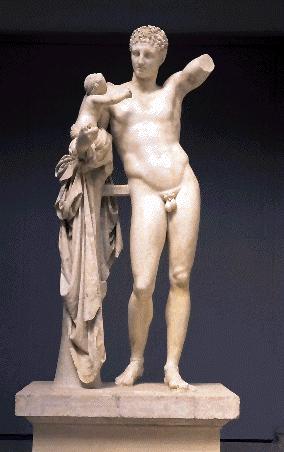 as a concept in the Platonic World of Ideas, and the special Platonic
Scale of
Beauty in five levels.
as a concept in the Platonic World of Ideas, and the special Platonic
Scale of
Beauty in five levels.
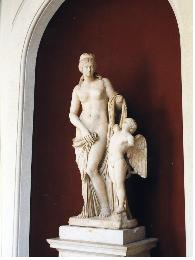 The Beauty we are talking about,
as Kallos, is not mainly what may first
come to mind, that is the beauty of only the human body with its erotic component.
It is certainly also that, and eminently that,
but not at all only that.
Kallos Beauty is the Greek philosophy concept of Inspiring Harmony inciting
the acquisition of a harmonious combination of more soul beauty and more body beauty
together, and the creation of more beauty
in all aspects of life on the part of a person observing and enjoying existing
harmony and beauty. It is very much related to the harmonious development of
the "Human Tetractys" seen in our page on
Pythagorean Man Emulation, that
should probably be read before this one, for better comprehension of Kallos
Beauty. Eros comes in only incidentally, like a
precious Blue Sapphire crown, as an additional
and divine gift of joy and pleasure in admiring Beauty, Kallos Beauty. Eros
itself
however is more globally the divine drive
that pushes human beings to pursue not only this more accessible Beauty, but all the other
beautiful higher archetypal values of True, Just, Good etc., along with the 4
cardinal values (see our pages Description In More Details,
Science Of Being and
Rule 3 and EthoPlasìn Love Life for more information on Eros).
The Beauty we are talking about,
as Kallos, is not mainly what may first
come to mind, that is the beauty of only the human body with its erotic component.
It is certainly also that, and eminently that,
but not at all only that.
Kallos Beauty is the Greek philosophy concept of Inspiring Harmony inciting
the acquisition of a harmonious combination of more soul beauty and more body beauty
together, and the creation of more beauty
in all aspects of life on the part of a person observing and enjoying existing
harmony and beauty. It is very much related to the harmonious development of
the "Human Tetractys" seen in our page on
Pythagorean Man Emulation, that
should probably be read before this one, for better comprehension of Kallos
Beauty. Eros comes in only incidentally, like a
precious Blue Sapphire crown, as an additional
and divine gift of joy and pleasure in admiring Beauty, Kallos Beauty. Eros
itself
however is more globally the divine drive
that pushes human beings to pursue not only this more accessible Beauty, but all the other
beautiful higher archetypal values of True, Just, Good etc., along with the 4
cardinal values (see our pages Description In More Details,
Science Of Being and
Rule 3 and EthoPlasìn Love Life for more information on Eros).
Statues as Platonic Protypes of Beauty and Wellness
Kallos is related to 'Light',
through the superior sense of sight, as a starting point, and to 'Good' as an end point.
Light leads to Kallos Beauty and Kallos Beauty leads to Good. The beautiful classical
sculptures of Greek statues for example, exposed in the pure light of the
Greek sky, were certainly created on the push
of that kind of divine erotic and creative drive as, when exposed to light
today, they
can still inspire Kallos Beauty harmony, even thousands of years after their
creation. A
sculptured
 statue however was first and foremost the representation of the ideal
value of an Archetype, or of a Platonic Protype. Archetypes are absolute values of beauty and perfection,
the top one of which is 'Good',
from which all objects or beings in our world take form, taking that form
from an immobile model, the archetype, immobile like a marble statue, guiding
the imperfect mobile forms derived from it in our illusionary reality.
In the Ancient Greek world, a sculpture was not
mainly a decorative element, like it became the case unfortunately in the Latin world that partly
absorbed the Greek culture. Having, and looking at a beautiful statue and
admiring it, for an Ancient Greek, was thus mainly and appeal to an ideal, the
desire to improve oneself, orient one's life on the parameters of beauty and
perfection of the archetype represented by the sculpture, as an appeal to the
ultimate Good. It was consequently
not mainly a decorative element, but a soul resourcing symbol, and archetypal force, to be
used in the pursuit of beauty, perfection and the ultimate Good. Ancient Greeks had a very special
word to express this function: "Agâlloma"
or "Agallîasis", meaning "Therapy of the soul
through communication with the Beauty archetype of a sculpture".
"Âgalma"
was, and still is, the Greek word for "sculpture" and "Agallîomai"
is
the verb for "getting better". The human body,
representing the Micro-Cosmos (man's realm), being the most perfect known result
of the evolution of the material world, was thus the best image and
representation of the divine Beauty of the Macro-Cosmos
(God's realm), and was admired as such. This explains the quantity and the
quality of their sculptures. The same basic kind of principle, albeit at a
relatively lower level, applied to the sculptures of animals and objects. They were an appeal to the beauty and
immutability of the symbols (archetypes or protypes) they represented, like a lion representing the
concept of "force", or an appeal to the perfection of their archetypes, more than the simple
representation of the object or animal being carved in stone. All sculptures
were symbols of the beauty, perfection and immutability of the archetypes of the
Platonic World of Ideas, the Platonic Protypes, giving form to all mobile, and thus imperfect, beings
in this world.
statue however was first and foremost the representation of the ideal
value of an Archetype, or of a Platonic Protype. Archetypes are absolute values of beauty and perfection,
the top one of which is 'Good',
from which all objects or beings in our world take form, taking that form
from an immobile model, the archetype, immobile like a marble statue, guiding
the imperfect mobile forms derived from it in our illusionary reality.
In the Ancient Greek world, a sculpture was not
mainly a decorative element, like it became the case unfortunately in the Latin world that partly
absorbed the Greek culture. Having, and looking at a beautiful statue and
admiring it, for an Ancient Greek, was thus mainly and appeal to an ideal, the
desire to improve oneself, orient one's life on the parameters of beauty and
perfection of the archetype represented by the sculpture, as an appeal to the
ultimate Good. It was consequently
not mainly a decorative element, but a soul resourcing symbol, and archetypal force, to be
used in the pursuit of beauty, perfection and the ultimate Good. Ancient Greeks had a very special
word to express this function: "Agâlloma"
or "Agallîasis", meaning "Therapy of the soul
through communication with the Beauty archetype of a sculpture".
"Âgalma"
was, and still is, the Greek word for "sculpture" and "Agallîomai"
is
the verb for "getting better". The human body,
representing the Micro-Cosmos (man's realm), being the most perfect known result
of the evolution of the material world, was thus the best image and
representation of the divine Beauty of the Macro-Cosmos
(God's realm), and was admired as such. This explains the quantity and the
quality of their sculptures. The same basic kind of principle, albeit at a
relatively lower level, applied to the sculptures of animals and objects. They were an appeal to the beauty and
immutability of the symbols (archetypes or protypes) they represented, like a lion representing the
concept of "force", or an appeal to the perfection of their archetypes, more than the simple
representation of the object or animal being carved in stone. All sculptures
were symbols of the beauty, perfection and immutability of the archetypes of the
Platonic World of Ideas, the Platonic Protypes, giving form to all mobile, and thus imperfect, beings
in this world.
Praxiteles: Hermes holding Dionysius (upper left), Venus (upper right) and Apollo with the lizard (further down to the left).
Phidias: Athena statue and shrine in the Parthenon, with all elements built on the basis of the Golden Number.
Beautiful blue flower buds representing an appeal to harmony as a therapy of the soul.
Kallos Beauty should be expressed in
everything members do or create, be it in wearing harmoniously matched
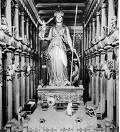 pieces
of clothing, creating a beautiful work of art, preparing an equilibrated meal, expressing a
harmonic music composition etc.
All that is worth doing, is
worth doing with Beauty. This principle is part of all aspects of the
holistic
education provided by the Academy: Education to Beauty.
In fact, as said in our home page, the one objective of the EthoPlasìn,
defined as "Better Decorum, More Merit and Planet Oneness Responsibility"
is essentially one of Beauty, Kallos Beauty, Education to Beauty, more Beauty in
all aspects of life, and forms the Logo of what the Academy calls its
pieces
of clothing, creating a beautiful work of art, preparing an equilibrated meal, expressing a
harmonic music composition etc.
All that is worth doing, is
worth doing with Beauty. This principle is part of all aspects of the
holistic
education provided by the Academy: Education to Beauty.
In fact, as said in our home page, the one objective of the EthoPlasìn,
defined as "Better Decorum, More Merit and Planet Oneness Responsibility"
is essentially one of Beauty, Kallos Beauty, Education to Beauty, more Beauty in
all aspects of life, and forms the Logo of what the Academy calls its
Pythagorean World Wellness Mission

Beauty however
has rules and these rules have to be instinctively known by superior souls, or learnt
by inferior sould. They eminently relate for
example to the Golden Number discovered by the Greek philosopher and
mathematician, Pythagoras. This is why this number is usually represented by the
Greek letter 'Phi', or
Φ,
after Phidias, the Greek sculptor who used it in the
proportions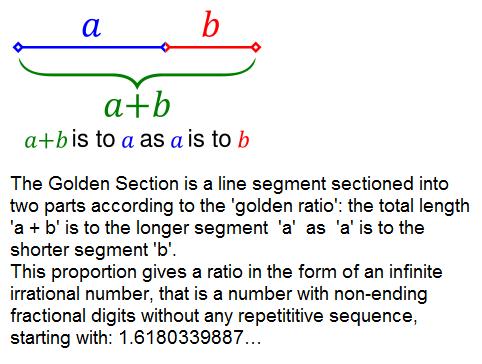 of his famously beautiful
sculptures (Like the Athena Parthenon shown on the left, in both the
proportions of the statue itself and the proportions of the two levels
of columns).
This Golden Number
defines a harmony of proportions that provokes spontaneous awe, that is an
ability to inspire reverence and admiration in front of what has been done or
created, and a desire to create more beauty on the part of the observer.
Euclid studied these proportions extensively in geometry. The
Acropolis and the Parthenon reflect these golden proportions. The text areas of the
beautiful medieval manuscripts were all defined according to the golden number.
The greatest artists, like Leonardo Da Vinci and
Michel Angelo, were all expert users of
the
of his famously beautiful
sculptures (Like the Athena Parthenon shown on the left, in both the
proportions of the statue itself and the proportions of the two levels
of columns).
This Golden Number
defines a harmony of proportions that provokes spontaneous awe, that is an
ability to inspire reverence and admiration in front of what has been done or
created, and a desire to create more beauty on the part of the observer.
Euclid studied these proportions extensively in geometry. The
Acropolis and the Parthenon reflect these golden proportions. The text areas of the
beautiful medieval manuscripts were all defined according to the golden number.
The greatest artists, like Leonardo Da Vinci and
Michel Angelo, were all expert users of
the
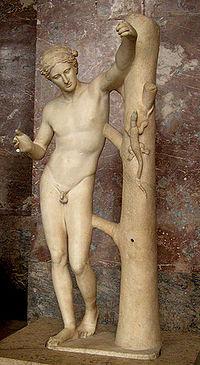
 Golden
Proportions in expressing Beauty. Nature itself, of all kingdoms, is a constant
expression of the Golden Proportions found in all places, from seeds, to sea
shells and galaxies. Modern physics has even found a correlation of the same
1.61 proportion in the Planck Length, defining the 'Infinite
Small Length'
found (so far) at the
sub-atomic level:
about 1.61 × 10-33
centimeters. In turn, at the level of the 'Infinite
Big Length', if we use 'x' as the length of the universe, we find the
same kind of golden number again in the 'x' factor multiplied by
1061
Planck lengths. In our own little way we have even given the rectangle of the "EΠA"
logo, at the top of each of our pages, the proportions of the Golden Number.
Golden
Proportions in expressing Beauty. Nature itself, of all kingdoms, is a constant
expression of the Golden Proportions found in all places, from seeds, to sea
shells and galaxies. Modern physics has even found a correlation of the same
1.61 proportion in the Planck Length, defining the 'Infinite
Small Length'
found (so far) at the
sub-atomic level:
about 1.61 × 10-33
centimeters. In turn, at the level of the 'Infinite
Big Length', if we use 'x' as the length of the universe, we find the
same kind of golden number again in the 'x' factor multiplied by
1061
Planck lengths. In our own little way we have even given the rectangle of the "EΠA"
logo, at the top of each of our pages, the proportions of the Golden Number.
The issue
of the Golden Proportions is only one example showing that rules do exist
in expressing Beauty and that they are founded in the essence of Nature itself, at a ll levels of the CoPHLE world.
This example also serves to show the universality and importance of these
rules that have to be learnt and respected by those who want to make this
world, as much as possible, the most beautiful place there is to live in.
ll levels of the CoPHLE world.
This example also serves to show the universality and importance of these
rules that have to be learnt and respected by those who want to make this
world, as much as possible, the most beautiful place there is to live in.
There are many other examples of this Beauty founded in objective criteria at all levels of Nature itself as opposed to on superficial subjective elements of passing fashions. Music Harmonics is another good example. The Human Tetractys is yet another one. All these levels and kinds of Beauty, if studied correctly, can then be used creatively through means like "Holographic Molding", for the benefit of all living beings and all civic environments. See our pages on Science Of Being and on the Pythagorean Man Emulation for more information on this subject. In fact we expand specifically on this subject in our page on Science Of Being, when talking about Music Harmonics, and our page on the Pythagorean Ways, when dealing with the subject of the Harmonics of the Quadrivium.
This long cultural tradition of using proper criteria, rules and techniques for creating or expressing Beauty, originating from Ancient Greece, should be revived and made part of all educational systems. It is totally ignored by practically all schools around the world at the moment. It is certainly and eminently at the heart of the cultural environment of the PythAcademia in all aspects of the holistic formation provided to all its members through the development of the Human Tetractys of the Pythagorean Man Emulation, on the basis of best Platonic Ethics, Aesthetics and Politics.
The attracting elegance and strength of the swan, as a symbol of beauty for the EthoPlasìn members (See our page on Ways and Symbols for more information). As mentioned in our home page, swans were also an important symbol of Delphi because God Apollo, symbol of Kallos Beauty and harmony, was brought in on a chariot carried by swans at his yearly visits, each spring, to the Delphic sanctuary.
The attracting 'Noticeable Difference' of harmonious flowers in their messy environment, as a representation of the EthoPlasìn holistic formation of its members to Kallos Beauty, in order for them to act positively on their often ugly civic environments (See our page on Basic Entry Requirements for more information).
Kallos Beauty is also a very Positive Force of its own. In front of human beings
expressing real Kallos Beauty, we usually cannot express negative feelings, like
hate, or aggressiveness, but rather only admiration, a desire to promote these
individuals, enjoy and possibly acquire some of their traits, and be associated
to their success. Expressing Kallos Beauty
is often based on, and favored by, given natural attributes, and these gifts can
help their owners, but it can also be learnt and acquired by all who live a
harmonious life, let alone possibly an ethically virtuous one, like the life
style EthoPlasìn members are trained in, with
their discipline and holistic formation.
Kallos Beauty
usually provokes the natural reaction one has in front of a beautiful flower
grown in the middle of an ugly place. Flowers do not usually have enemies.
One does not hate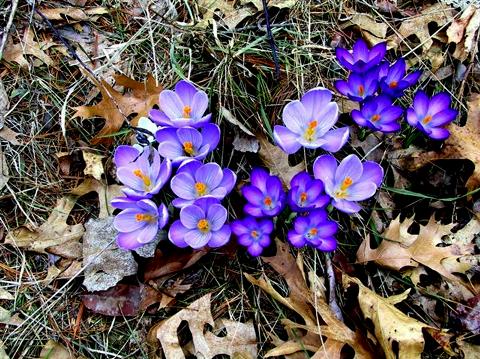 flowers nor make war to them. This is why members are educated
to Kallos Beauty and expected to express Kallos Beauty the best they can.
This is the concept of the 'Noticeable Difference'
expressed in our page on the
Basic Entry Rules of Membership. The more human flowers grow in our
society, through proper education and holistic formation, the more our world
will be incited to be, or become more and more, a harmonious one and a pleasant
place to live in from a civic point of view.
flowers nor make war to them. This is why members are educated
to Kallos Beauty and expected to express Kallos Beauty the best they can.
This is the concept of the 'Noticeable Difference'
expressed in our page on the
Basic Entry Rules of Membership. The more human flowers grow in our
society, through proper education and holistic formation, the more our world
will be incited to be, or become more and more, a harmonious one and a pleasant
place to live in from a civic point of view.
Kallos Beauty has also led to the coining of a new word, to describe the form of mild sexual appeal that is often related to Beauty, called Kallosexuality, as explained in our page on Rule 3 and the EthoPlasìn Love Life.
The Greek "Phi" (Φ) however, much before it was used as a symbol of Beauty of proportions related to the Golden Number, was, in Greek "Phi"-lo-sophy, a much older symbol of Loving Justice, both in terms of personal and social justice, but a kind of meritocratic Justice, giving lovingly to everyone a fair lot in life on the basis of their own merit, that is giving them their best possible Good in their present earthly life. It is thus a dually important symbol for the EthoPlasìn Academy that is pursuing objectives of social beauty and justice through the advent of more MeritoCracy, and hopefully an eventual new EthoCracy (leading to TruthOcracy as a first step and to Aristarchy as a final achievement) system of governance for our modern world. This is why it appears on the private Academy's symbol (at the top of the page), on the left side of the roof level. The Greek "Thu" (Θ) appearing on the opposite right side of the roof, to balance with the "Phi" on the left side, was, and is, a symbol of the beauty of Ethics which are at the base of the holistic formation provided by the Academy. The Φ and the Θ are thus the representation of two attracting forces leading our society to its best possible 'Good' in this earthly life.